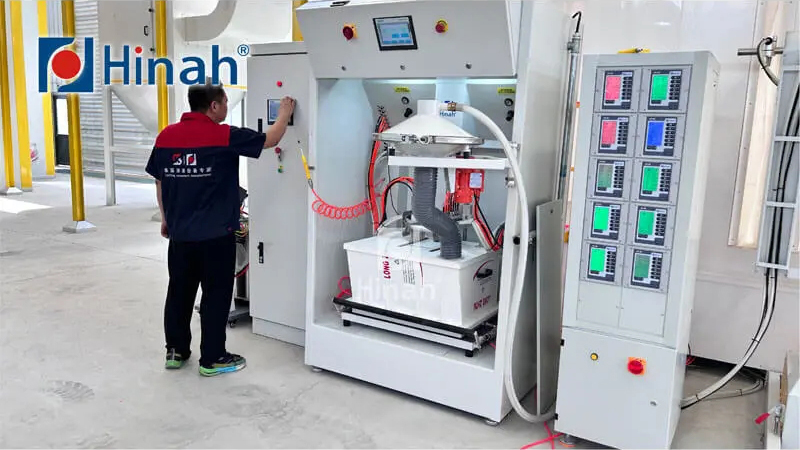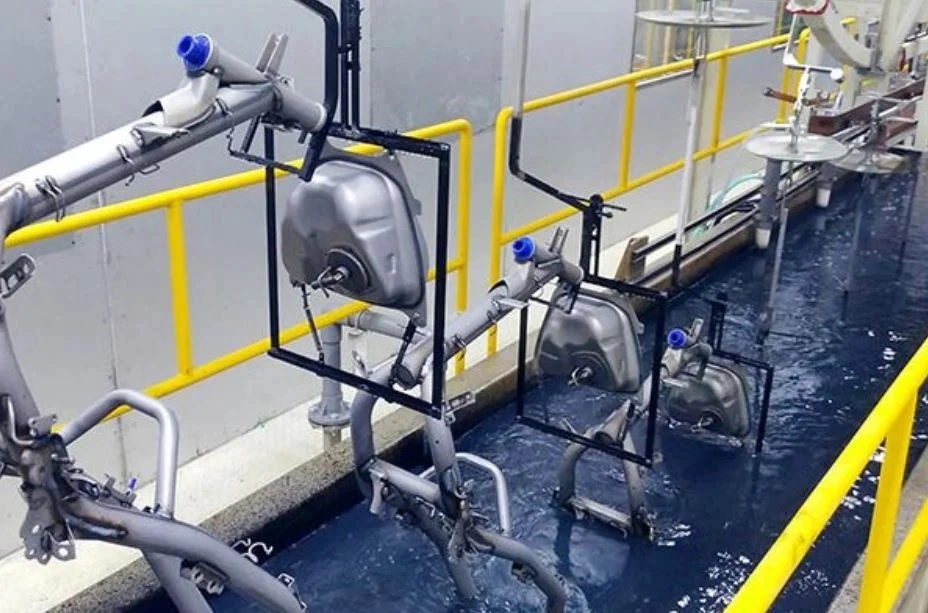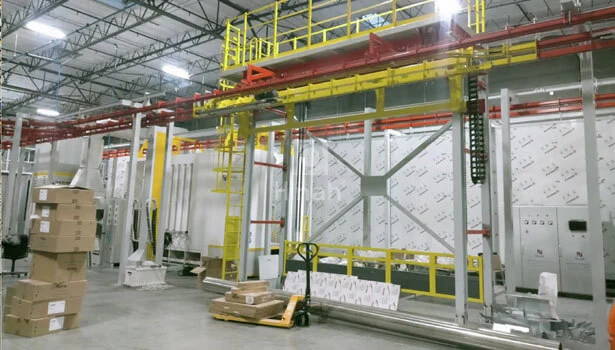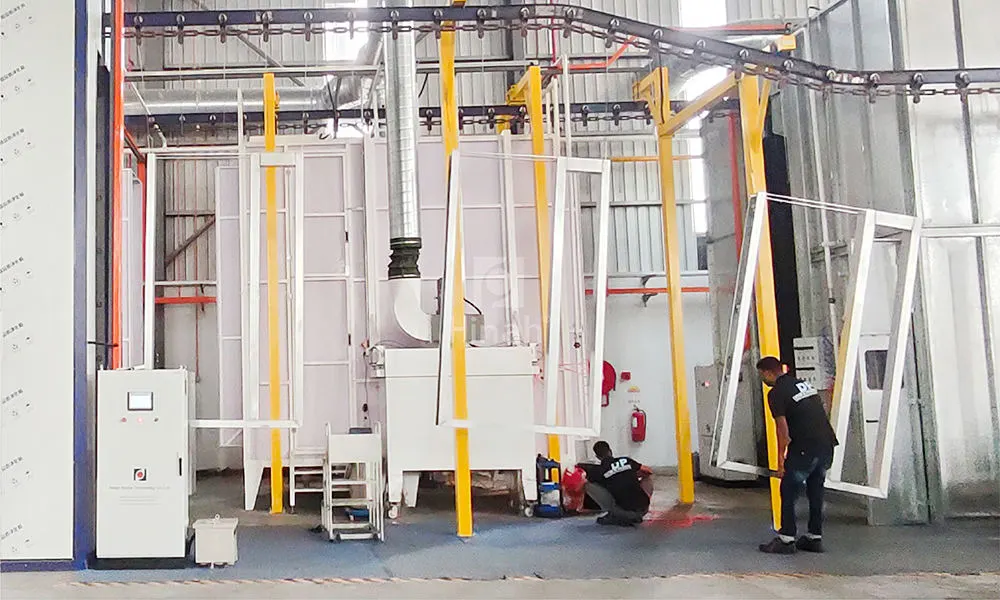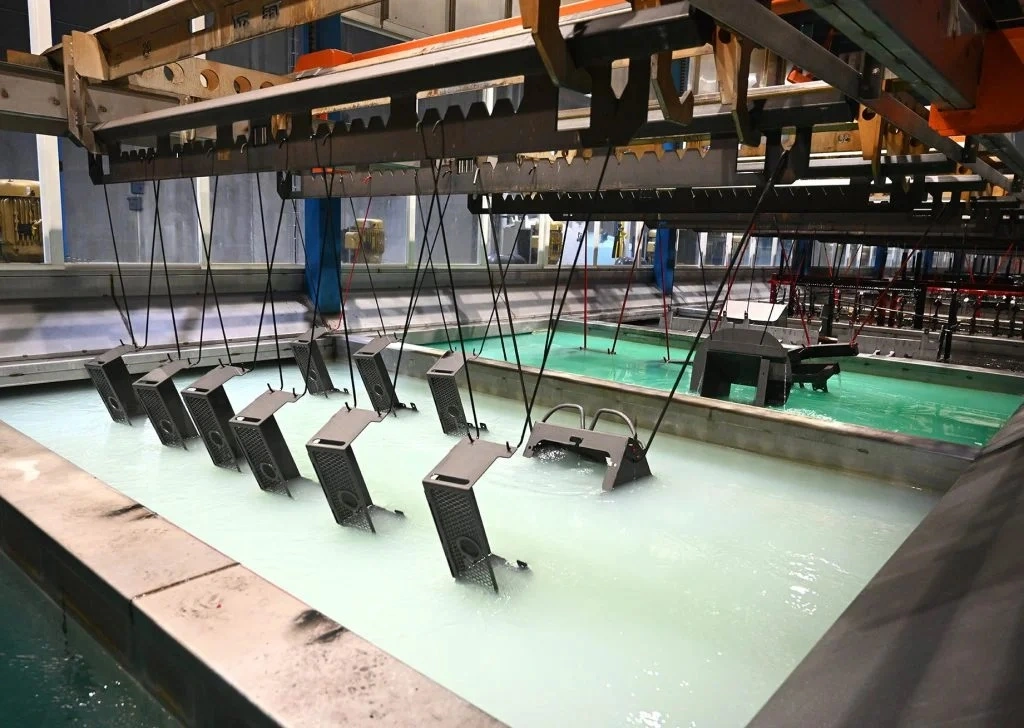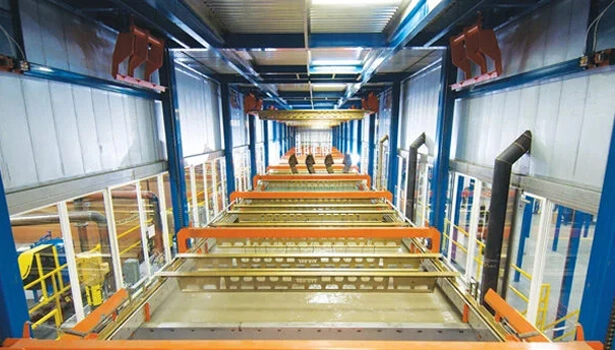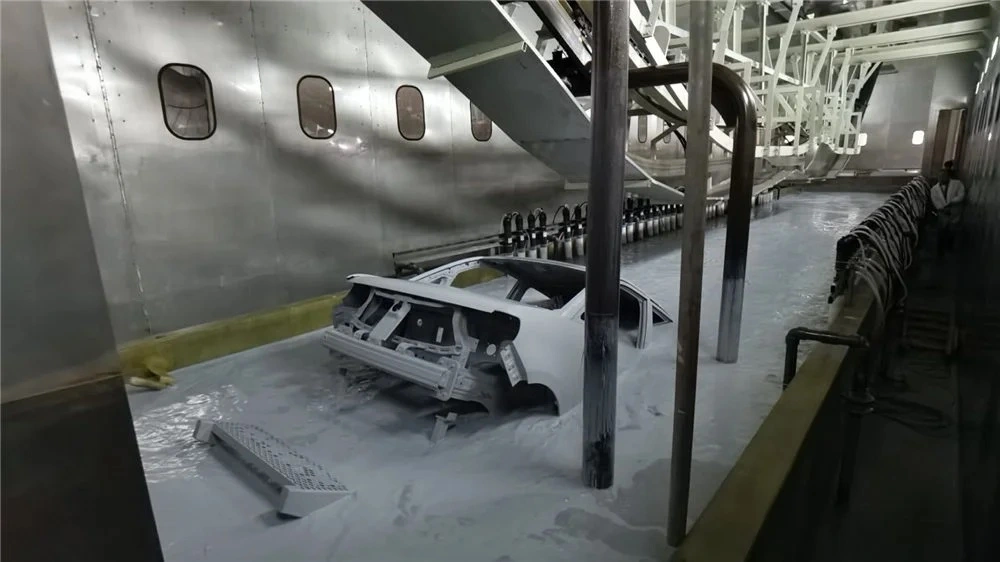In today's fast-paced industrial world, automation is transforming how tasks are performed, and one of the most innovative advancements is the painting robot. These machines are not just about replacing human labor; they are enhancing precision, efficiency, and safety in various sectors. If you've ever wondered how painting robots work, where they are used, or why they are becoming essential, this article dives deep into the topic. We'll explore the fundamentals, applications, benefits, challenges, and future trends of painting robots, providing a comprehensive overview. Whether you're in manufacturing, art, or simply curious about robotics, understanding painting robots can shed light on their growing importance. By the end, you'll have a clear picture of how these devices are shaping industries and what to expect next. Let's get started by breaking down the key aspects of painting robots.

What Is a Painting Robot?
A painting robot is an automated machine designed to apply coatings, such as paint, varnish, or protective layers, to surfaces with high accuracy and consistency. Unlike manual painting, which relies on human skill and can be prone to errors, a painting robot uses robotic arms, sensors, and computer-controlled systems to perform tasks. These robots are commonly employed in industrial settings but are also making their way into artistic and domestic applications. The core components of a painting robot include a manipulator (like an articulated arm), a control system, and application tools such as spray guns or brushes. They can be programmed to follow complex paths, adjust for environmental factors, and ensure even coverage, making them ideal for repetitive or large-scale projects. The evolution of painting robots has been driven by the need for quality and efficiency, and they now play a crucial role in sectors like automotive manufacturing, where a flawless finish is critical. In essence, a painting robot combines robotics and coating technology to deliver superior results while reducing waste and labor costs.
How Does a Painting Robot Work?
The operation of a painting robot involves a sophisticated interplay of hardware and software. Typically, it starts with programming: engineers use offline simulation software or teach pendants to define the robot's path and parameters, such as spray distance, speed, and paint flow. The robot's arm, often with multiple joints for flexibility, moves along this predefined trajectory. Sensors, like vision systems or laser scanners, help the painting robot detect surface variations, ensuring consistent application even on irregular shapes. For instance, in car manufacturing, a painting robot can adjust its angle to cover curves and edges without missing spots. The control system acts as the brain, processing data from the sensors and making real-time adjustments to avoid overspray or drips. Additionally, many painting robots integrate with environmental controls, such as ventilation systems, to maintain optimal conditions. This seamless coordination allows a painting robot to achieve high-quality finishes in less time than manual methods. Moreover, advancements in artificial intelligence enable some painting robots to learn from previous jobs, improving their performance over time. Overall, the working mechanism of a painting robot emphasizes precision, adaptability, and automation, making it a valuable asset in modern production lines.
Applications of Painting Robots in Various Industries
Painting robots are versatile and find use across multiple industries, thanks to their ability to handle diverse materials and surfaces. In the automotive sector, a painting robot is indispensable for applying primers, basecoats, and clear coats on vehicles, ensuring a durable and aesthetic finish that meets strict quality standards. Similarly, in aerospace, these robots coat aircraft components with protective layers to resist corrosion and extreme weather, enhancing safety and longevity. The construction industry employs painting robots for large structures like bridges and buildings, where manual painting would be time-consuming and hazardous. Even in furniture and woodworking, a painting robot can apply stains and varnishes with uniform precision, reducing waste and improving product appeal. Beyond industrial uses, painting robots are emerging in art and design, where they create intricate murals or custom pieces based on digital designs. For example, artists collaborate with programming experts to use a painting robot for large-scale installations, blending technology with creativity. Additionally, consumer applications include home automation, where compact painting robots assist in DIY projects. This wide range of applications highlights how a painting robot adapts to different needs, driving innovation and efficiency across fields.
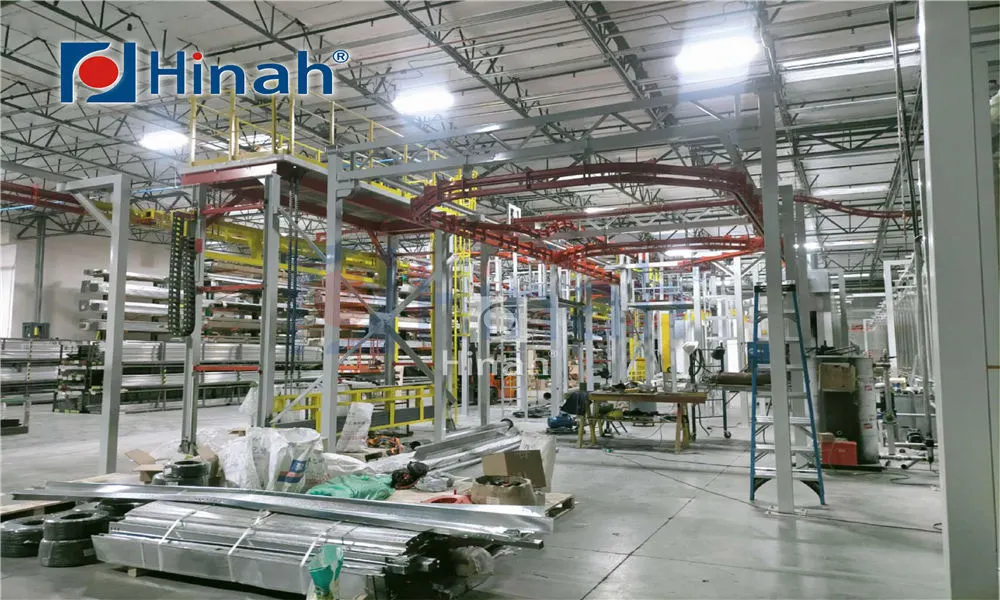
Advantages of Using Painting Robots
The adoption of painting robots offers numerous benefits that justify their growing popularity. First, efficiency is a key advantage: a painting robot can operate continuously without breaks, significantly speeding up production cycles and reducing project timelines. For instance, in manufacturing, a painting robot can coat multiple items per hour, compared to slower manual processes. Second, quality and consistency are greatly enhanced; these robots eliminate human errors like uneven strokes or missed areas, resulting in a flawless finish every time. This is crucial in industries where coating defects can lead to product failures or recalls. Third, safety improvements are notable, as painting robots can handle hazardous materials and work in environments with fumes or heights, minimizing risks to human workers. Cost savings also come into play—while the initial investment in a painting robot might be high, it reduces long-term expenses related to labor, material waste, and rework. Moreover, a painting robot supports sustainability by optimizing paint usage, which lowers environmental impact. Finally, scalability allows businesses to easily integrate painting robots into existing systems, adapting to increased demand without major overhauls. These advantages make a painting robot a smart choice for companies aiming to boost competitiveness and innovation.
Challenges and Limitations of Painting Robots
Despite their benefits, painting robots face certain challenges that can affect their implementation. One major issue is the high initial cost, which includes not only the robot itself but also installation, programming, and maintenance expenses. Small businesses might find it difficult to afford a painting robot, limiting access to larger corporations. Another challenge is the complexity of programming and operation; setting up a painting robot requires skilled technicians, and any errors in the code can lead to defects or downtime. Additionally, painting robots may struggle with highly customized or irregular surfaces that require nuanced human judgment, such as artistic detailing or repair work. Maintenance is also a concern, as these machines need regular calibration and part replacements to stay efficient. Furthermore, integration with existing workflows can be tricky, especially in older facilities not designed for automation. There's also the social aspect: the rise of painting robots could lead to job displacement in some sectors, raising ethical questions. However, many of these challenges are being addressed through advancements in user-friendly software, modular designs, and training programs. By understanding these limitations, industries can better plan for a smooth transition to using a painting robot.
The Future of Painting Robots
The future of painting robots looks promising, with trends pointing toward greater intelligence, flexibility, and accessibility. Advances in artificial intelligence and machine learning are enabling painting robots to become more autonomous, capable of self-adjusting based on real-time data and even predicting maintenance needs. For example, future painting robots might use AI to analyze surface textures and automatically optimize coating strategies. Another trend is the development of collaborative robots (cobots), which can work alongside humans safely, making a painting robot more adaptable in smaller workshops or artistic studios. Sustainability will also drive innovation, with painting robots designed to use eco-friendly materials and reduce energy consumption. Additionally, the rise of the Internet of Things (IoT) could allow painting robots to connect with other smart devices for seamless production monitoring. In terms of applications, we might see painting robots expanding into new areas like healthcare for coating medical devices or even space exploration for maintaining equipment in harsh environments. Overall, the evolution of the painting robot is set to make it more versatile and integral to various fields, fostering a new era of automation that balances efficiency with creativity.
Frequently Asked Questions About Painting Robots
Q1: What is a painting robot and how is it different from traditional painting methods?
A1: A painting robot is an automated system that uses robotic arms and computer controls to apply coatings like paint to surfaces. Unlike traditional methods that rely on human skill, a painting robot offers higher precision, consistency, and speed, reducing errors and waste in processes such as industrial manufacturing or large-scale projects.
Q2: How does a painting robot improve efficiency in manufacturing?
A2: A painting robot improves efficiency by operating continuously without fatigue, applying coatings faster than humans, and minimizing rework through consistent quality. It can handle multiple tasks simultaneously, integrate with production lines, and optimize material usage, leading to shorter cycle times and lower operational costs.
Q3: What industries commonly use painting robots?
A3: Painting robots are commonly used in industries like automotive for vehicle coating, aerospace for aircraft components, construction for bridges and buildings, and furniture for wood finishing. They are also gaining traction in art and consumer applications for customized designs and home projects.
Q4: Are painting robots expensive to implement and maintain?
A4: Yes, the initial implementation of a painting robot can be costly due to the price of the robot, installation, and programming. Maintenance expenses include regular calibration, part replacements, and software updates. However, the long-term savings in labor, materials, and improved productivity often justify the investment for many businesses.
Q5: Can painting robots be used for artistic or creative purposes?
A5: Absolutely! Painting robots are increasingly used in art to create detailed murals, sculptures, and digital art pieces. Artists program these robots to follow specific designs, allowing for large-scale or complex works that blend technology with creativity, opening new possibilities in the art world.
This article has covered the essential aspects of painting robots, from their basic functions to future trends. As automation continues to evolve, the painting robot stands out as a key player in enhancing productivity and innovation. If you're considering integrating one into your operations, assessing your specific needs and challenges can help you make an informed decision.


